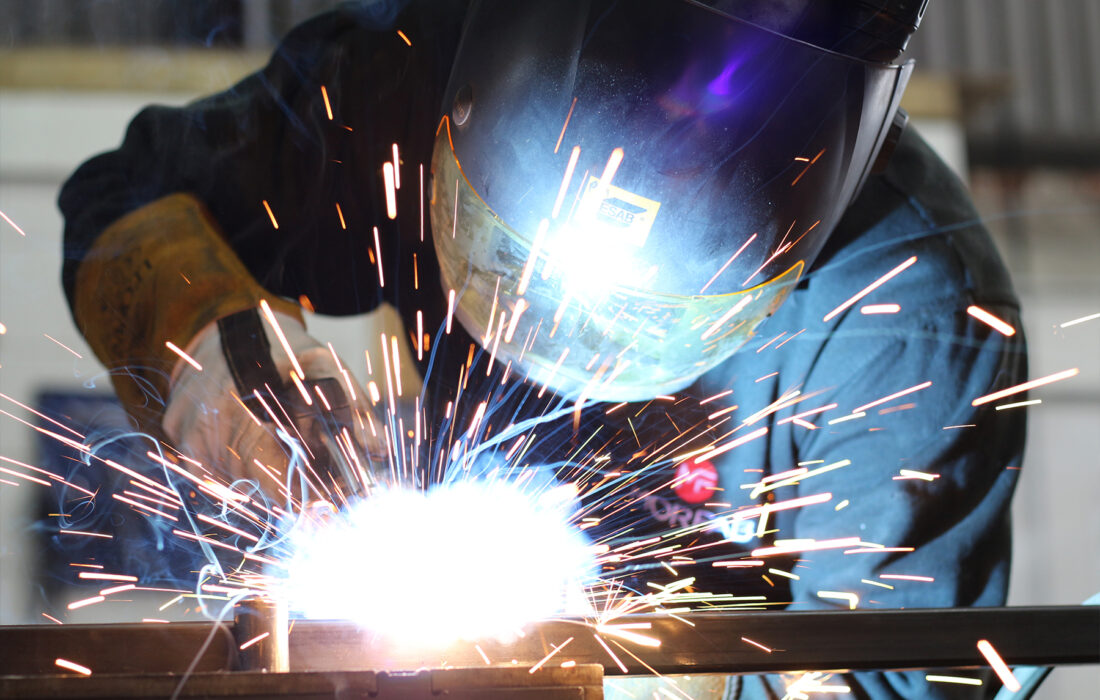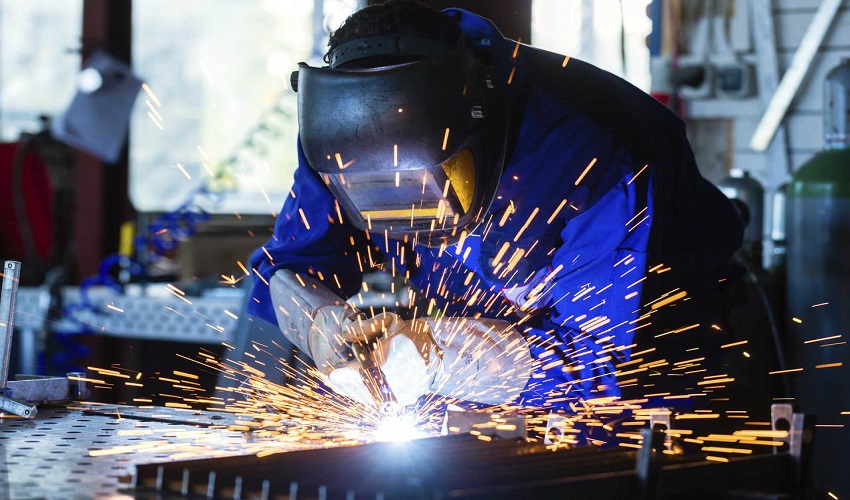Metal Fabrication Melbourne: Precision Design for All Demands
Metal Fabrication Melbourne: Precision Design for All Demands
Blog Article
Cutting-edge Fads in Steel Manufacture: Enhancing Longevity and Precision
In the realm of steel construction, the quest of toughness and accuracy has led to a wave of innovative trends that are reshaping the sector. These trends are not simply shaping the existing yet also laying the groundwork for the future of steel construction, guaranteeing further enhancements in durability and precision.
Advanced Welding Technologies
In the realm of steel construction, the fostering of advanced welding technologies has actually considerably reinvented the market's method to accomplishing premium top quality and accuracy in structural welds. Advanced welding modern technologies, such as laser beam welding and friction stir welding, have become game-changers in the field. Laser beam welding employs a focused laser beam of light to join metal parts with exceptional accuracy and speed, making it perfect for slim materials and intricate layouts. On the other hand, rubbing stir welding develops unbelievably strong bonds by mechanically intermixing the particles of the products at the joint, eliminating the need for melting the metal. These technologies provide numerous benefits, consisting of minimized heat-affected zones, very little distortion, and enhanced mechanical residential or commercial properties in the welded joints. By leveraging these innovative welding techniques, steel producers can elevate the toughness, toughness, and precision of their architectural welds, satisfying the significantly requiring demands of modern-day building and construction jobs.
Robot Automation in Manufacture
Embracing robot automation has become a foundation of modern steel fabrication practices, enhancing and improving processes performance throughout the industry. Robots are revolutionizing the means steel elements are manufactured, supplying unequaled precision and speed while minimizing human mistake. These automated systems can deal with recurring tasks with consistent accuracy, resulting in higher top quality output.
One key advantage of robot automation in steel construction is the capacity to function all the time without fatigue, substantially boosting production outcome. This constant procedure decreases downtime and increases task timelines, eventually saving costs for makers. In addition, robots can be programmed to do elaborate tasks that may be dangerous or tough for human employees, boosting safety in the work environment.
Furthermore, robotic automation allows smooth integration with various other digital modern technologies, such as computer-aided layout (CAD) software application and Web of Points (IoT) systems (steel fabrication melbourne). This interconnected strategy boosts communication in between various stages of construction, enhancing workflows and guaranteeing real-time tracking and control. As the steel construction industry continues to advance, robotic automation stands apart as a transformative force driving performance and accuracy in producing procedures

High-Strength Alloy Advancement
The advancement of high-strength alloy growth in steel construction is improving the industry's approach to boosting product sturdiness and performance. High-strength alloys are engineered to display remarkable mechanical homes, such as boosted tensile strength, durability, and corrosion resistance compared to conventional steel grades. By integrating these advanced alloys right into construction procedures, producers can produce elements that hold up against greater tension degrees and rough atmospheres, leading to more durable and dependable output.
One secret benefit of high-strength alloy development is the capacity to minimize product thickness without endangering structural honesty. This you could look here not just leads to lighter-weight parts however additionally adds to set you back savings and improved effectiveness in construction and setting up processes. Moreover, the improved strength-to-weight proportion of these alloys enables the style and construction of structures with higher load-bearing capacities while reducing general weight.
3D Modeling and Simulation Software
Advancements in steel fabrication procedures have been dramatically pushed by the assimilation of advanced 3D modeling and simulation software program tools. These devices permit producers to create thorough virtual versions of their tasks, allowing them to visualize the end product with precision before any manual labor begins. By mimicing different tension elements, ecological conditions, and architectural lots, makers can maximize layouts for enhanced durability and performance. Furthermore, 3D modeling and simulation software application simplify the manufacturing process by recognizing prospective issues at an early stage, decreasing the requirement for pricey rework and reducing product waste.

Lasting Practices in Steel Manufacturing
Including lasting techniques into steel production procedures is crucial for lessening ecological impact and ensuring long-lasting source accessibility. One key lasting practice is the adoption of energy-efficient innovations to minimize greenhouse gas emissions during the steel production procedure. This consists of using eco-friendly power sources, such as solar or wind power, to power steel plants and executing energy-efficient tools to enhance energy use.
One more critical aspect of sustainable steel production is the liable sourcing of resources. This includes guaranteeing that the iron ore and other resources utilized in steelmaking are obtained from ecologically pleasant and honest sources. By promoting openness in the supply chain and adhering to strict ecological criteria, steel suppliers can minimize the adverse effects of source extraction on neighborhood environments and neighborhoods.

Final Thought
In conclusion, the innovative patterns in steel construction such as innovative welding modern technologies, robot automation, high-strength alloy advancement, 3D modeling and simulation software application, and lasting methods are boosting the durability and accuracy of steel items. These advancements are revolutionizing the steel manufacture industry by enhancing sustainability, high quality, and performance. It is clear that the future of steel manufacture lies in welcoming these cutting-edge modern technologies to meet the needs of modern-day building and production sectors.
In the realm of steel fabrication, the pursuit of sturdiness and precision has actually led to a wave of innovative patterns that are improving the industry.In the realm of steel fabrication, the fostering of advanced welding technologies has actually considerably revolutionized the industry's strategy to attaining premium top quality and precision in architectural welds. As the steel construction market continues to evolve, robot automation stands out as a transformative pressure driving efficiency and accuracy in making processes.
Additionally, reusing and recycling steel scrap and waste materials play a substantial duty in enhancing the sustainability of steel manufacturing. steel fabrication melbourne.In conclusion, the cutting-edge patterns in steel fabrication such as sophisticated welding technologies, robotic automation, high-strength alloy development, 3D modeling and simulation software application, and lasting methods are boosting the toughness and accuracy of steel products
Report this page